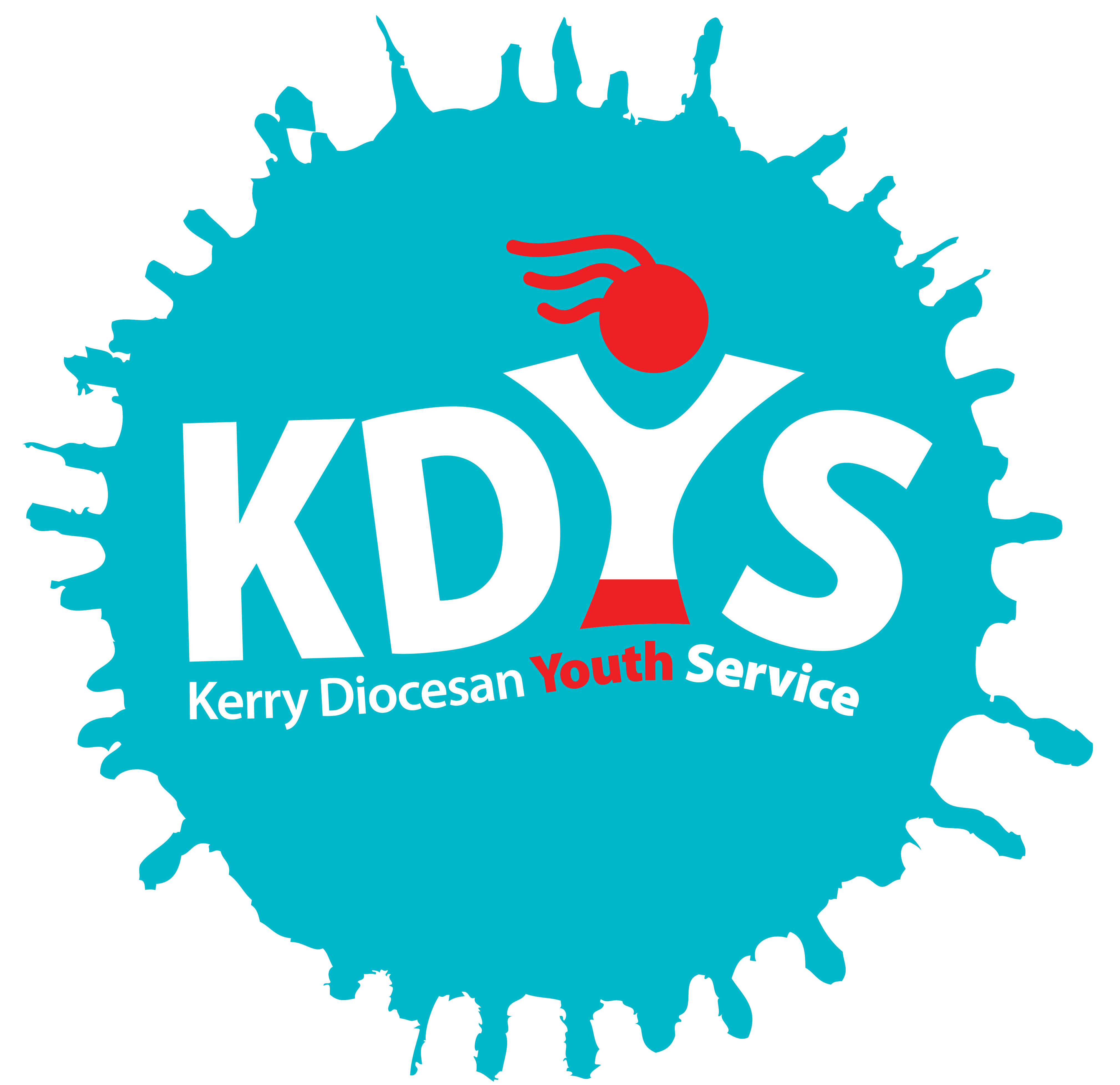This article has been researched and presented by Katie Doolan.
Biography; Katie Doolan is a 17 year old pupil In St. Brigids, Presentation Secondary School in Killarney and she wrote this in the hopes of educating young people on the importance of mental health.
Introduction: Reaching out and asking for help when you’re not feeling good is often a scary and daunting thought. These are some great websites and resources to go to if you feel you need it. They are judgement free and here to help.
Jigsaw Kerry: Jigsaw is a free, non- judgemental and confidential mental health support and counselling organisation for young people aged 12-25. They are based in Tralee in Kerry and have centres all around the country. They do face to face counselling, and you can also talk online with them if you would prefer. Jigsaw aims to have an Ireland where every young person’s mental health is valued and supported. To book an appointment or to find more information go to https://jigsaw.ie
Spunout.ie: Spunout.ie is a mental health information website made by young people for young people. It is a website that offers information to young people about mental health and how to keep good wellbeing. It is an easy access website if you are wanting to learn more about how to have a good mental health. For more information go to https://spunout.ie
Bodywhys: Bodywhys is an eating disorder association that aims to help people struggling with an eating disorder or body image troubles. It is a website that you can go to for information if you or someone you care about is struggling with an eating disorder. They give great information on how to help yourself or others and they also have a hotline you can call for someone to talk to. For more information go to https://www.bodywhys.ie
Childline: Childline is a service for young people aged 18 and under. They are an organisation committed to being there for every young person and giving advice about a wide range of topics that may be upsetting you. They have a number you can call or text at any time and they have very useful articles that are easy to understand and access. It is a very child friendly website. For more information go to https://www.childline.ie
HSE 50808 Hotline: The 50808 Hotline is a number you can text at any time if you need someone to talk to. It is completely anonymous and free of charge. You only have to give as much information as you are comfortable with. You will have a trained volunteer texting you at whatever time of day suits you and there are no commitments. It is very useful if a face to face meeting or phone call is too daunting for you. For more information go to https://text50808.ie
Information on Mental Illnesses’ / Disorders
Depression: One of the most common mental illnesses’(HSE). Its primary symptoms include:
- A persistent feeling of sadness and, as its described, emptiness.
- A loss of interest in things that would usually bring you joy such as hobbies and interests feeling like a chore.
- Angry outbursts and irritability with no clear reason.
- A lack of energy and motivation that makes small tasks very tiring both mentally and physically. You may find everyday things such as brushing your teeth, overwhelming.
- With depression all of these symptoms may lead to suicidal thoughts or feelings. Although the effects may seem permanent and never ending, it is very possible to get better. For more info go to https://www2.hse.ie/conditions/mental-health/clinical-depression/clinical-depression-symptoms.html
Anxiety: Another very common mental illness. Anxiety as an emotion is our body’s very natural response to stress. But when these feelings seem constant and overwhelming, it may mean you have an anxiety disorder. An anxiety disorders main symptoms include:
- A constant feeling of worry and stress over things that are seen by many as low risk such as crossing the street. The danger that others think is small would seem much bigger to some with anxiety.
- Trouble concentrating due to heightened stress levels and worrying. Can cause things like school or work to be harder.
- Restlessness and difficulty sleeping.
- With anxiety one may experience an anxiety attack or panic attack. This is a sudden feeling of intense anxiety. If you or someone you are with experiences an attack, try this method of calming them down. Ask them to name,5 things they can see, 4 things they can touch, 3 things they can hear, 2 things they can smell and 1 thing they can taste. This exercise helps to ground them with reality and regain control. For more info go to https://www.healthline.com/health/anxiety
Eating disorders: An eating disorder is an illness that effects a person’s body image and self-confidence. There are many different types of eating disorders and sadly because of social media and the unrealistic beauty standard it is constantly reinforcing, eating disorders are more common than ever. The three most common disorders are anorexia nervosa, bulimia nervosa and binge eating disorder
- Anorexia nervosa; is an eating disorder in which a person will not eat enough, or not eat at all, in order to loose weight. This is dangerous as we need food to survive and live a healthy life. Anorexia, like all eating disorders, comes from or causes an obsession with a person’s weight, image, and often a certain level of low self-esteem. People with any eating disorder may also experience a self-hatred and a very warped body image. They may think they are bigger and/or ‘uglier’ than they are. People with anorexia can drop to dangerously low body weights so it is one of the easiest to identify. A person with anorexia or any eating disorder will be constantly thinking about food, their weight and how they look.
- Bulimia nervosa; is an eating disorder where a person will eat an excess amount of food, and then engage in a ‘purging’. This purging is usually self-induced vomiting, but can also be misuse of laxatives, excessive exercising, fasting or any other way of relieving their body from the food they just ate. Commonly a person will purge after a binge of food where they eat a lot, but it can also take place after a normal amount of food has been eaten that the person has convinced themselves that it is too much. Much like anorexia a person with bulimia will experience a lot of self-hatred especially after a binge before the purging has happened. People with bulimia will be more likely to stay in a normal body weight so it is much harder to identify than anorexia or binge eating disorder. People with bulimia would suffer with a loss of control during the binge eating and then use the purging as a way of ‘making up for it’
- Binge Eating Disorder; is an eating disorder where a person will eat an excess amount of food and feel as though they have no control over their eating as the binge is happening. It is very similar to bulimia but it lacks the purging aspect. This leads to people with this disorder to gain considerable weight. People with this disorder will find themselves trapped in a cycle of binging, self loathing, attempted dieting and binging again
For more information on any kind of eating disorders go to https://www.bodywhys.ie
OCD: OCD stands for Obsessive Compulsive Disorder. According to the National Institute of Mental Health (NIMH) ‘Obsessive-Compulsive Disorder (OCD) is a common, chronic, and long-lasting disorder in which a person has uncontrollable, reoccurring thoughts (obsessions) and/or behaviours (compulsions) that they feel the urge to repeat over and over.’
Some examples of possible obsessions could be; Fear of germs or uncleanliness, Unwanted thoughts about ‘taboo’ subjects such as religion, sex or harm, Wanting things to be in order or symmetrical. These obsessions cause compulsions such as; Excessive cleaning of yourself or the space around you, Arranging things in a specific way or Constantly checking on things such as eg. The oven to see if its on. Having rituals or habits doesn’t mean you have OCD, as the difference is people with OCD cant control the thoughts or behaviour and do them to get momentary relief from the obsession. For more info on OCD please visit https://www.nimh.nih.gov/health/topics/obsessive-compulsive-disorder-ocd#:~:text=Obsessive%2DCompulsive%20Disorder%20(OCD),to%20repeat%20over%20and%20over.
ADHD: ADHD Ireland states the ADHD stands for for Attention Deficit Hyperactivity Disorder. It is a neurological disorder that impacts the parts of the brain that help us plan, focus on, and execute tasks. ADHD impacts approximately 5% of the population in Ireland. ADHD is a developmental impairment of the brain’s executive functions. People with ADHD have trouble with impulse-control, focusing, and organisation. Its main symptoms are
- Attention Issues such as difficulty maintaining attention.
- Hyperactivity- Finding it hard to sit still, constant fiddling or messing
- Impulsiveness- Finding it hard to wait your turn, interrupting others
- Difficulty with social skills.
For more info on ADHD visit https://adhdireland.ie/for-young-people
ASD ( Autism ) : ASD stands for Autism Spectrum Disorder. The NIMH states ‘Autism spectrum disorder (ASD) is a developmental disorder that affects communication and behavior.’
Autism is a very wide spectrum and can show itself in many different ways. The main symptoms that can show in varying severity levels are;
- Difficulty with communication and interaction with others
- Restricted and repetitive behaviours and interests.
- Difficulty functioning in school work and day to day life.
- Lack of understanding and interest in socialising.
Autism is a very complex disorder. For more info go to https://www.nimh.nih.gov/health/topics/autism-spectrum-disorders-asd#:~:text=Autism%20spectrum%20disorder%20(ASD)%20is,first%20two%20years%20of%20life.
KERRY COMHAIRLE NA NOG VIDEO


